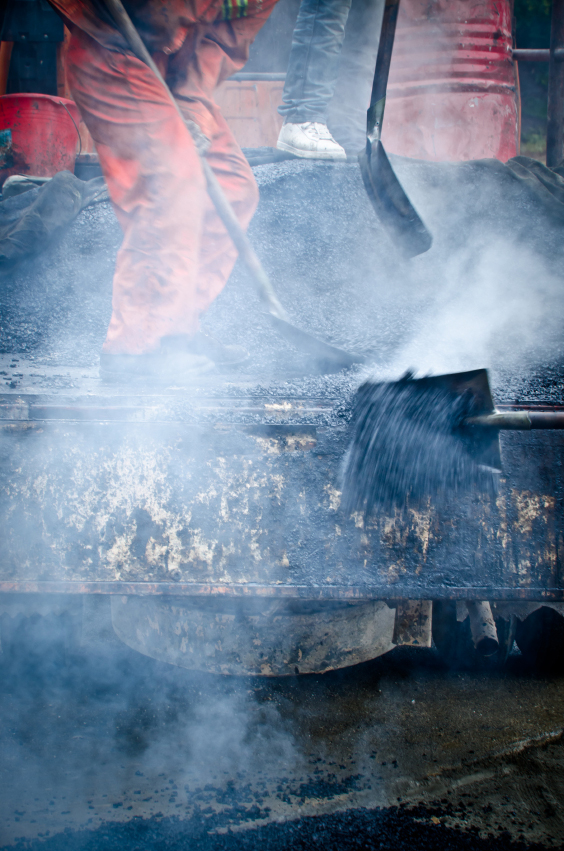Tar Pushers and Mesothelioma
Road to Mesothelioma for Tar Pushers Is Paved with Asbestos
You build and maintain roads. Or you seal roofs to protect them against the elements.
You do this by spreading hot asphalt or tar. And because of this, you’ve likely come into contact with the mineral asbestos.
If so, then your risk of developing mesothelioma is probably moderate to high.
Asbestos for a long time was used in:
- Asphalt
- Tar paper
- Roof sealants
- Heat-protective garments
It was added to make these items stronger and longer-lasting. Asbestos was also added to garments to protect your body from the heat given off by prepared asphalt and the ovens used in doing the preparing.
Asbestos Is Not Gone

Also, the manufacturers were worried that workers like you would sue them for not having given you any warning about the dangers they knew asbestos posed.
But even with all that, asbestos is still around today. You can still encounter it and continue to be put at risk of developing mesothelioma.
This is possible because the roads and many of the roofs tar pushers worked on before asbestos fell out of favor are still in use.
Only now, those roads and roofs are in terrible shape. The roads have potholes and cracks. The roofs are weather-beaten and falling to pieces.
If you go back in and resurface or rebuild those roads, you’ll encounter asbestos from decades earlier. The same is true if you go back and work on those now-tattered roofs.
The problem is that as you prepare those old surfaces to receive new asphalt, the asbestos contained in the old asphalt is disturbed.
When asbestos is disturbed, it finds its way into the air. From there, it finds its way into your lungs.
All you need to do is walk through an area with free-floating asbestos in the air and breathe normally. Tiny particles of the mineral will glide right down to the deepest part of your lungs.
Or if those particles instead land on your lips, you might end up swallowing some of them. Those will find their way down into your intestines.
The asbestos you inhale or swallow stays inside you. Always. While it’s there, it works to bring about mesothelioma.
That doesn’t happen immediately. The process goes on for anywhere from 10 to 50 or more years.
But, once mesothelioma shows up, it grows and spreads like wildfire.
Union Support for Dealing with Asbestos
Asbestos and its effect on workers like you has been a matter of much anguish for leaders of the unions that represent asphalt workers and others in related fields.
This includes the Laborers’ International Union of North America (LIUNA), which represents more than 625,000 construction workers of various types.
LIUNA’s response to the dangers of asbestos has focused in part on education — making sure members know what to do when they encounter or even think they have encountered asbestos.
For unions — and LIUNA is no exception — worker safety and health are the goal. And in that regard, LIUNA has done a job you can be proud of.
But the union can only do so much. It’s you who must do most of the work from here on out. Contact your union to find out what programs they offer to help you be safe around asbestos on the job.
And contact your union for information about health programs offered to help you be on the lookout for mesothelioma — or, if mesothelioma has already found you, to help you fight back and extend your life.
